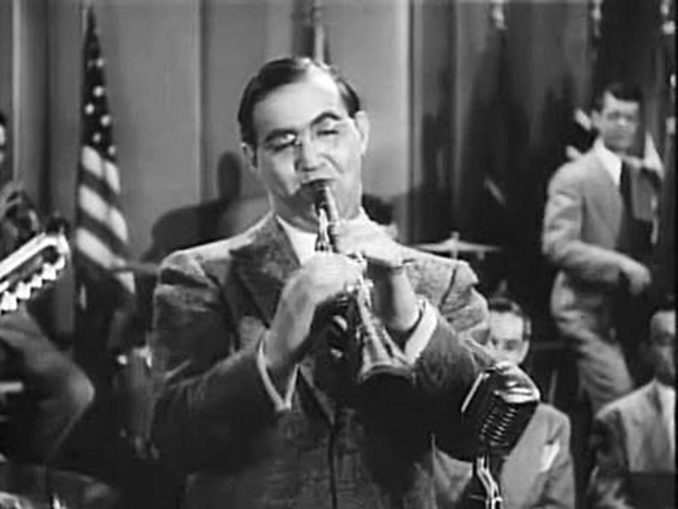
Film screenshot / Public domain
“V” or “Victory Discs” were a development of an idea originally cooked up in 1941 by thee US Army’s Recreation and Welfare Section and the were based on the thought that recordings of military band music might be inspirational for troops based overseas where their main entertainment was Forces Radio. This, of course, was before the USA entered WW2. By 1942, the Armed Forces Radio Service (ARFS) were sending 33rpm vinyl transcription discs to the troops from concerts, recitals, radio broadcasts, film soundtracks, special recording sessions, and previously issued commercial records.
All this was happening at a time when The Musicians Union in the US (American Federation of Musicians) was on strike over a disagreement about royalty payments (and indeed, continued to be on strike until 1944, the longest strike in entertainment history). Live concerts and shows were unaffected as were recordings made for overseas troops on what had become known as V (for Victory) discs as they were not available to the general public.
On October 27, 1943, George Robert Vincent, a pioneer of sound recording convinced James C Petrillo, the leader of the Musicians Union, to allow the union’s musicians to make records for the military as long as the discs were not sold and the masters were disposed of. Musicians who had contracts with different record labels were now able to record together for this nonprofit enterprise and V discs were born. (Later Vincent claimed that the “V” stood for Vincent, not Victory)!
Louis Armstrong, Art Tatum and Coleman Hawkins recorded the first V Disc concerts and specialists from Decca, Columbia and RCA Victor were brought in to help organise recordings, talent, manufacturing and distribution. The recordings were an instant hit with the Soldiers, Airmen and Sailors as the forces radio stations had, up to this point, had no new music to play because of the strike and the troops had become bored with a diet of “oldies”. Soon a wide variety of musical genres were available as V discs, from orchestral to jazz and soon radio networks sent airchecks and live feeds to V-Disc headquarters in New York. Movie studios sent rehearsal feeds from the latest Hollywood pictures to V-Disc, and musicians from all over the US gathered at V-Disc recording sessions in theaters around New York and Los Angeles, including CBS Playhouse No. 3 (currently the Ed Sullivan Theater), NBC studio 8H (the current home of Saturday Night Live), and CBS Playhouse No. 4 (reborn in the 1970s as Studio 54).
Some V Discs started to have spoken introductions, famous amongst these being when Glenn Miller introduced a recording of Stardust by saying, “This is Captain Glenn Miller speaking for the Army Air Force’s Training Command Orchestra and we hope that you soldiers of the Allied forces enjoy these V-Discs that we’re making just for you.”
The V-Disc programme survived both the musicians’ strike and the War by several years. At the end of the War, Vincent left the army and recommended that the V-Disc program be discontinued. But production continued, although at a much-reduced rate, until May 1949. During its 6-year run, the V-Disc program produced 900 unique discs containing 3000 separate recordings and shipped more than 8 millions discs overseas.
The V-Disc programme ended in 1949. Audio masters and stampers were destroyed. Leftover V-Discs at bases and on ships were discarded. On some occasions, the FBI and the Provost Marshall’s Office confiscated and destroyed V-Discs that servicemen had smuggled home. An employee at a Los Angeles record company served a prison sentence for the illegal possession of over 2500 V-Discs.The original deal had been kept and the V Discs were largely kept out of the public’s hands.However, some copies inevitably found their way into private collections and at the 50th anniversary of the end of WW2, the restrictions on re-recording and owning copies were lifted and now there are CDs of collections of V Discs available to purchase.
An early 1943 recording of Frank Sinatra and The Tommy Dorsey Orchestra
Jo Stafford – I’ll Be Seeing You (1944 V Disc version)
Charlie Barnet and his Orchestra ‘Skyliner’ 1945
The Benny Goodman Orchestra and one of my Dads favourites
© Dalester 2020
The Goodnight Vienna Audio file



